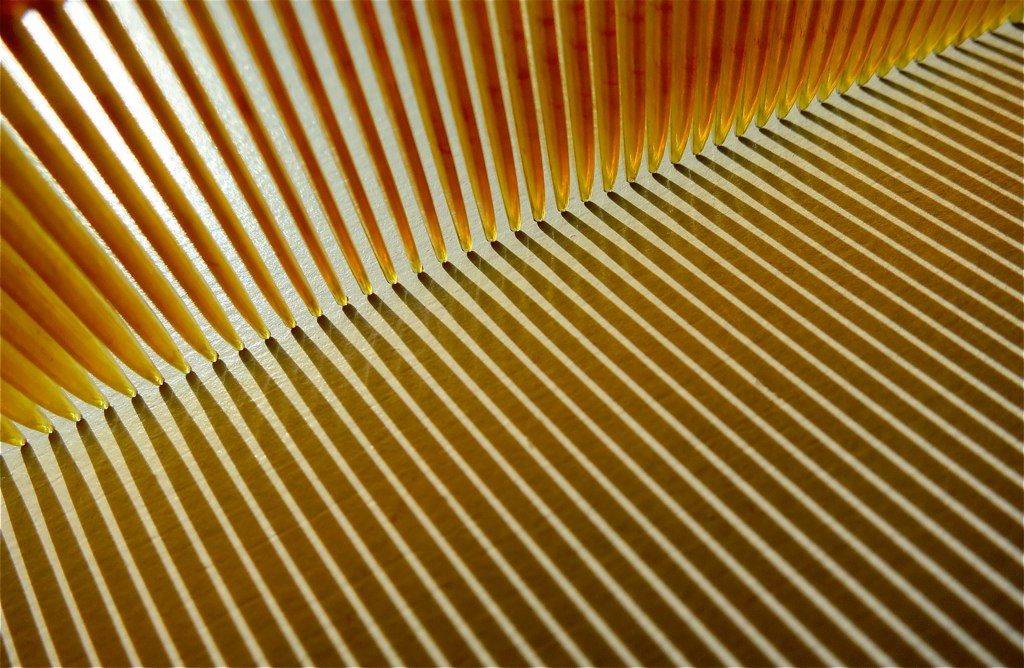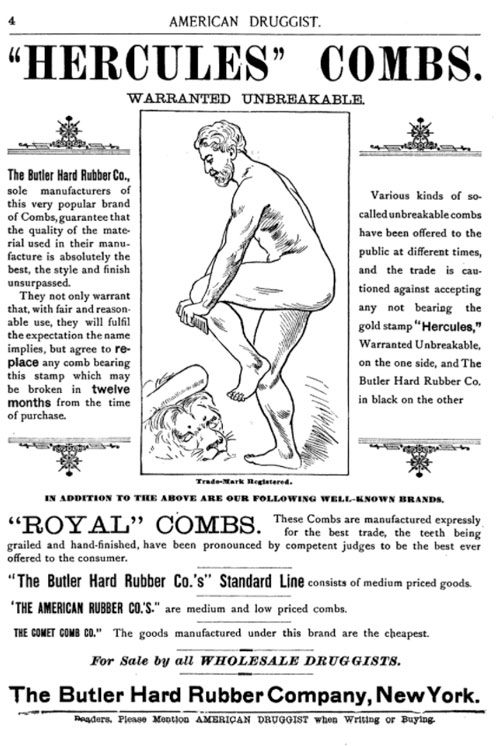A Brief History of the Unbreakable Comb
They were important in the evolution of both plastic and rubber, among other things.

A version of this post originally appeared on Tedium, a twice-weekly newsletter that hunts for the end of the long tail.
Modern hair combs are unusually simple tools—perhaps our simplest. Their single row of bristles, usually black, are designed to do one thing—separate and organize your hair follicles into a more attractive format.
They do this effectively, without the need of any electricity. And they’re cheap, too—you never have one when you need one, but you can buy a pack of 72 of them for eight bucks, or 11 cents each.
But even these simple devices carry an air of mystery. Specifically: Why does my comb need to announce itself as “unbreakable?” Does it matter these days? And, of course, has anyone successfully broken one?
The answer, it turns out, lies in the past, as it was the inventiveness of Charles Goodyear proved a turning point in American history, not just for combs, but for manufacturing. His 1843 discovery of the vulcanization process, which cured and toughened rubber in ways that made it a more useful material, was not an easy one to get to. His early efforts, according to Rubber: An American Industrial History, earned respect from major politicians like Andrew Jackson and Henry Clay, but his products struggled on the market and he at one point faced bankruptcy.
But once he figured out his vulcanization process, Goodyear was in a position to reinvent numerous industries, with combs being near the top of the list.

(If you’re curious: Goodyear died nearly 40 years before the tire manufacturer named for him was created. And while there was also an industrialist named Charles W. Goodyear who came to prominence in the late 19th century, the vulcanized rubber inventor was unrelated.)
At the time, combs tended to be made using fragile materials like bone, wood, and ivory, which, when dropped, could easily break. But Goodyear’s combs were different: Rubber wasn’t a shatter risk, of course, and it was also firm enough to be used while offering a degree of flexibility. The combs, at first, were not cheap, but according to Chauncey Depew’s 1895 book 1795-1895: One Hundred Years of American Commerce, Volume 2, they soon reinvented the market:
The first article made in hard rubber to any considerable extent was the comb. It is said that Goodyear’s first experiments in this line made his combs cost twenty times as much as the ivory combs then in use ; but the rubber comb has now practically displaced all other kinds. Probably five hundred varieties of rubber combs have been made since the beginning of this industry.
Goodyear, who died in 1860, left behind a growing comb market, with two companies allowed to sell the devices under his patent—the India Rubber Comb Company and the American Hard Rubber Company. Eventually, though, Goodyear’s patent expired, and competition started to build up in the comb space, leading to more aggressive advertising in newspapers and trade publications. One of the common phrases that gained currency in the late 19th century was “unbreakable,” something highlighted by the Hercules Combs sold by the Butler Hard Rubber Company.

“Various kinds of so-called unbreakable combs have been offered to the public at different times, and the trade is cautioned against accepting any not bearing the gold stamp ‘Hercules,’ Warranted Unbreakable, on the one side, and The Butler Hard Rubber Co. in black on the other,” an ad for the device in American Druggist said in 1891.
It wouldn’t last, thanks to the eventual use in plastic, but there was a time when people thought of the word “Goodyear” and combs came to mind—rather than tires.
Eventually, though, the inevitability that was plastic came, and from the moment that John Wesley Hyatt, came up with one of the first usable plastics, celluloid, it was obvious where things were going. Hyatt was inspired by an 1863 contest that offered a $10,000 prize for anyone who could come up with a billiard ball that wasn’t made of ivory. Hyatt never came up with the billiard ball, but he soon was producing combs. In 1878, he was awarded a patent—one of many he would receive in his life—for “improvement in the manufacture of combs from celluloid.”
It makes sense that plastic combs quickly found a home on the market. The use case was perfectly matched for the type of material, for one thing, but it was also an object that was very easy to make and mold into a specific shape. When new types of plastic, such as nylon, appeared, combs often used the materials first.
They also became more utilitarian, and less elaborate than the bone, wood, or ivory combs that had come before.
“With the rise of mass-production plastics, the fanciful decorative combs and faux ivory dresser sets so popular in the celluloid era gradually disappeared,” the author Susan Freinkel noted in a book excerpt on Scientific American. “Combs were now stripped to the most essential elements—teeth and handle—in service of their most basic function.”

And after World War II, a truly “unbreakable” material—polypropylene, a flexible plastic invented by two European scientists in the 1950s—quickly became the high watermark for plastics, and, ultimately, redefined the comb yet again.
A 1975 Philadelphia Daily News article, colorfully, highlights the way that combs became a difficult business to stick with. Clement A. Belusar, the marketing director of the then-recently shuttered Ajax Comb Company, broke down how the move to an “unbreakable” plastic permanently did in the company.
“Then came polypropylene and the unbreakable comb. Our downfall,” he explained. “The only time you had to replace a comb was when you lost it. And when you lost it, somebody else could find it and he wouldn’t have to buy one. We’re out of the business …”
I lose combs pretty often, so I assume that they should’ve just waited for me to be born.
“Oh wow, maybe it really is unbreakable.”
Of the many unusual activities that can be found on YouTube, one of the weirdest involves a subsection of kids who feel compelled to test the claims of unbreakability parlayed by cheap modern combs picked up at such fine establishments as Sport Clips.
Some were successful, even unexpectedly so. Others weren’t so lucky.
(Fun discovery when watching some of these clips: In at least one instance, I ran into a pre-roll ad for Red Lobster highlighting its Crabfest—before, you know, watching someone bending a comb in a very similar way. They know.)
Of course, the truth of the matter is that combs were aiming for a very specific kind of unbreakability—the phrase refers to the fact that the teeth aren’t designed to fall out if you drop the device on the ground, not the idea that an 11-cent device would survive an endurance test.
We’re not talking Unbreakable in the M. Night Shyamalan sense here. Cheap combs don’t possess superpowers.
What they do possess, however, is the ability to reliably comb your hair.
A version of this post originally appeared on Tedium, a twice-weekly newsletter that hunts for the end of the long tail.








Follow us on Twitter to get the latest on the world's hidden wonders.
Like us on Facebook to get the latest on the world's hidden wonders.
Follow us on Twitter Like us on Facebook